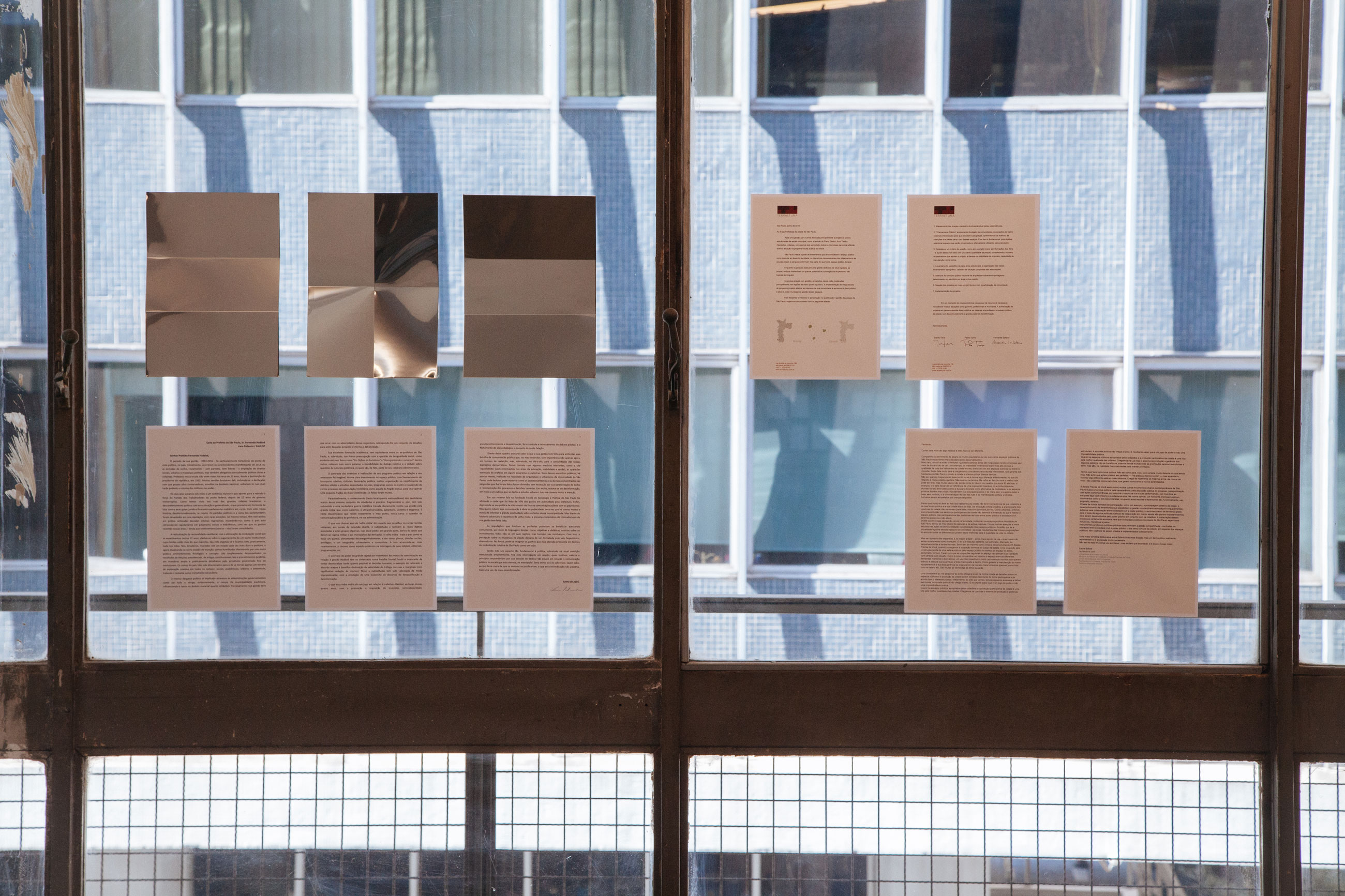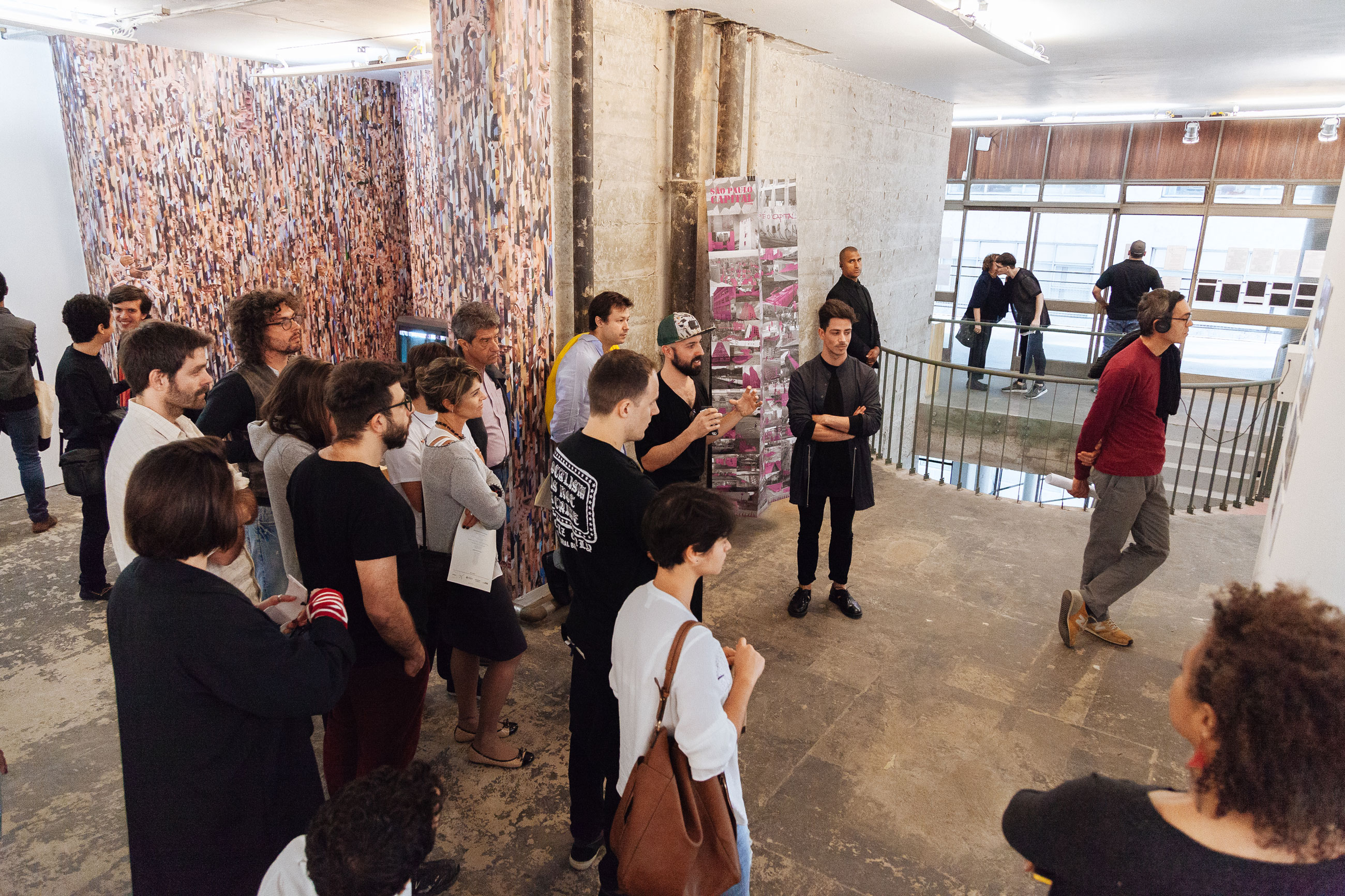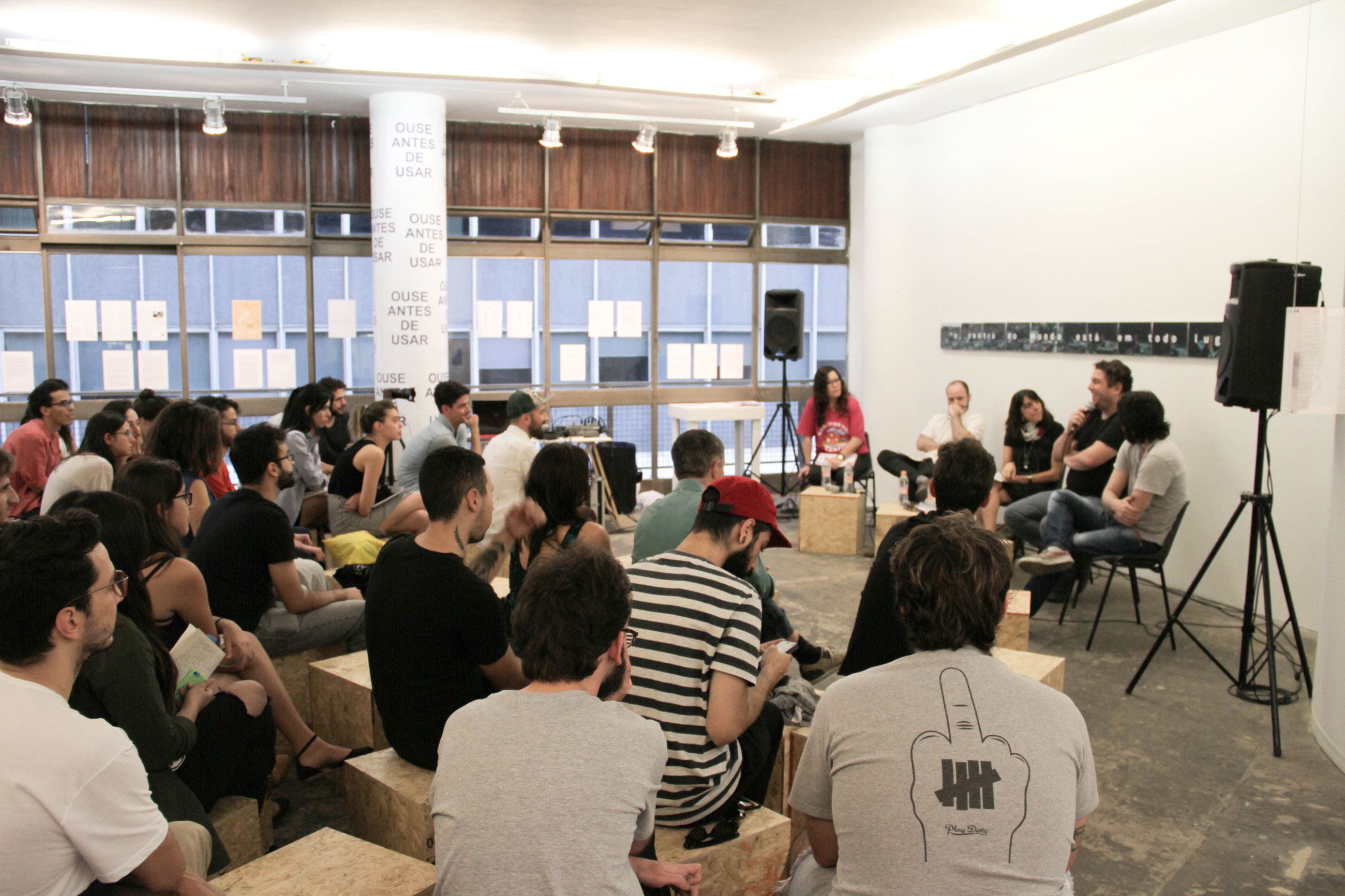Correspondence as Political Traction
close“(…) Thereby some brothers who were sent to this village, which is called Piratininga, arrived on 25th of January of the Year of the Lord 1554, and celebrated the first mass in an extremely poor and narrow lodge, on the day of Apostle Saint Paul’s conversion, thus dedicating it to him (…) The Indians built this lodge for our use. We have now demanded a bigger one to be built, and we are going to be its architects, with the sweat from our faces and the help of the Indians.”
Exhibition view, Letters to the Mayor: São Paulo, Pivô Art and Research, São Paulo, Brazil, 2016

São Paulo’s birth certificate is a letter.
In his epistles to the Society of Jesus in Rome, Priest José de Anchieta methodically narrates the day-to-day of the newly founded village of São Paulo. These letters amount to an extensive production, replete with reflections, concerns and questions that were often left unanswered. The inherent uncertainty of this type of correspondence between two worlds so geographically (and epistemologically) distant from each other, highlights a fundamental element of this medium: writing a letter is, first of all, to have a dialogue with oneself. To look at one’s own thoughts materialised into written words, to witness the construction of something fleeting and intimate through a convention of linguistic symbols, norms and rules, and ultimately to recognise oneself, almost narcissistically, in the reflection of what is transcribed. A careful reading of Anchieta’s letters tells us more about the afflicted face of an Iberian, Christian man in the ‘New World’ than about the Indigenous peoples who perhaps never understood their world as ‘new’.
Exhibition view, Letters to the Mayor: São Paulo

Writing a letter implies an awareness and acceptance of a series of external factors, some of which are uncontrollable. First of all, it implies the existence of a receiver, making the letter into a double-sided mirror and a sort of dialectic construction, one which anticipates a conversation yet to happen. It also implies the compliance with certain codes and norms that allow the correspondence to be delivered, such as the need for stamps and money, and most importantly the final recipient has to have an officially recognised address.
To write and send a letter is also to subject the message to a trajectory in the city. Like a flâneur who wanders and is seduced by different routes, a letter is exposed to other hands, voyeurs and to the potential to get lost. When reaching its final destination, the letter carries another dimension beyond the initial message. The limits of its paper sheets and envelope are now parallels and meridians of a new cartography of the city, that conveys the places, arrangements and hands that it has gone through. The moment in which the message reaches its recipient expresses what it means to live together: a constant definition and negotiation between co-citizens in the urban environment, under complex administrative and regulatory arrangements. Ultimately, the letter does not start – or finish – at the time of its writing; it is a vector towards the future. It is not by chance that 400 years after Anchieta’s epistle describing the ‘new world’ that would later be called Brazil, the concept for the urban design of Brasília, the country’s capital, was also born from a letter.
Exhibition detail, Letters to the Mayor: São Paulo

By proposing the use of this form as a communication between a group of professionals that think and act upon the city and the main representative of municipal authority, the exhibition Letters to the Mayor: São Paulo aims to place the city, with all its complex social-spatial networks, at the centre of the debate. The project invites more than 50 professionals from architectural design, urban planning, activism, art, curating, and other fields of spatial practice, to write a letter to the coming mayor expressing their ideas, opinions, and desires for the city. The letters are strategically exhibited during the electoral campaigns for the Municipality of São Paulo, happening amidst an increasingly tense socio-political moment in Brazil. By bringing a set of relevant voices to the public awareness and to the desks of the potential mayor, the project wishes to intensify the discussion about the city at a crucial time for its future.
Exhibition view, Letters to the Mayor: São Paulo

The exhibition showcases a varied group of professionals including both consecrated and emerging names, whose contributions offer a nuanced profile of what the architectural discipline can comprise and the many ways in which it can contribute to the multifaceted constitution of our urban sphere and civic life. In order to maximise the exhibition’s impact, and to include the greatest number of voices, the project also consists of the seminar Open Letters. Four round-tables foster exchanges between the general public and key-professionals developing significant work in the city, and together they explore the themes of Project, Strategy, Resistance, and 2054- The 5th Centenary. The project is concluded with the sending of the letters and the seminar’s documentation to the mayor’s office.
Seminar Open Letters

Letters to the Mayor: São Paulo integrates a worldwide project initiated by Storefront for Art and Architecture, which took place in New York, Athens, Bogota, Buenos Aires, Lisbon, among others, showcasing the letters of their respective architects. São Paulo’s edition is held in collaboration with Pivô Art and Research, a non-profit cultural association housed in the iconic Copan, a building designed by Oscar Niemeyer and located at the heart of São Paulo’s downtown.
Exhibition view, Letters to the Mayor: São Paulo

Curatorial text for Letters to the Mayor: São Paulo, Storefront for Art and Architecture in collaboration with Pivô Art & Research, São Paulo, Brazil.